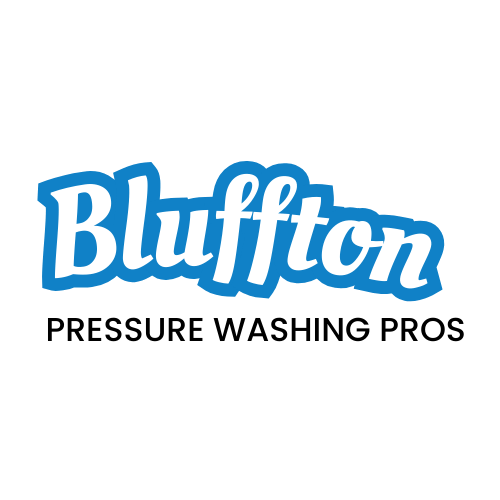
Understanding the difficulties of unloader valve adjustment can greatly impact the performance of your equipment. A well-adjusted unloader valve is necessary for maintaining operational efficiency and extending the lifespan of your pressure washer or combination unit.
By mastering the techniques involved in fine-tuning this important component, operators can guarantee peak functionality and improved safety during operation.
If you’re looking for pressure or power washing services in Bluffton, South Carolina then without any wait call our company Bluffton Pressure Washing Pros at – 877-749-6437.
Let’s explore the key points and best practices that can lift your equipment’s performance to new heights.
Necessary Tools and Preparation
Utilizing two 7/16 wrenches and a ratchet with a 7/16 deep well socket is necessary for proper unloader valve adjustment procedures. Check all the tools whether they are in good condition or not before starting.
Safety goggles and gloves are recommended. Have an extra set of hands available to trigger the gun valve during adjustment.
Before starting, check the pressure gauge and wash tip for accuracy and leaks in the system. Refer to the equipment manual and nameplate for additional guidance. Remember, safety is most important when working with pressurized systems.
Understanding the use of tools properly and the preparation will guarantee a successful adjustment. Safety is a top priority when working with machinery.
Also Read:
How to Clean Pool Tile with a Pressure Washer
How To Clean A Pressure Washer’s Carburetor
Key Components
Understanding the key components of the unloader valve is important for effective pressure washer maintenance and troubleshooting. The unloader valve guarantees that pressure is correctly managed, preventing damage and ensuring peak performance.
Here are the basic parts:
- Ball Check: This component allows or prevents water flow based on pressure levels.
- Inner Piston: The control of the mechanism and moves in response to pressure.
- Spring: The tension in the spring decides the pressure needed for the piston to move.
- Valve Body: This houses all the internal components, providing structural integrity.
Regular inspection and maintenance of these parts can prevent malfunctions, ensuring safe operation and increasing the lifespan of your pressure washer.
Understanding Unloader Valve Functions
An important component of pressure washing systems, the unloader valve serves to regulate water flow and pressure by bypassing pressurized water when the trigger gun valve is closed. This function prevents pressure buildup within the system, which ensures safe operation and prevents any potential damage.
Moreover, the unloader valve allows for switching between pressure wash and steam modes in combination units by adjusting the top and bottom set of nuts on the unloader stem. It is crucial to maintain proper functioning by checking the pressure gauge and wash tip conditions regularly. Any leaks in the system should be quickly repaired to avoid any complications during operation.
To use a pressure washing machine safely and efficiently it is important to understand the functions of the unloader valve.
Setting Up for Pressure Wash Mode
To prepare for pressure wash mode, verify the installation of a pressure wash tip before activating the water pump. Here are three important steps to guarantee safe and effective operation:
- Check for Proper Tip Installation: Make sure that the pressure wash tip is perfectly in place to prevent any misdirected sprays.
- Inspect for Leaks: Before starting the pump, check for any leaks in the system to avoid potential danger during operation.
- Avoid Exceeding Rated Pressure: Slowly increase pressure while keeping an eye on the gauge and never run the machine above its selected pressure limit to prevent damage and ensure safe usage.
Adjusting for Steam Mode
When switching the pressure washer from pressure wash mode to steam mode, the adjustment process involves replacing the wash tip with a steam nozzle and fine-tuning the unloader valve for the best steam pressure and temperature settings.
To set the unloader valve for steam mode, start by swapping the wash tip with a steam nozzle. Turn the adjustment knob counterclockwise until the spring is loose. Increase the pressure close to the machine’s steam pressure rating. Fine-tune the adjustment knob to achieve the correct operating pressure and temperature.
It is crucial to make sure the temperature setting is accurate to prevent excessive burner cycling. Prioritize safety by carefully adjusting the unloader valve to optimize steam performance and prevent potential hazards.
Finalizing Valve Adjustment
Completing the adjustment process for the unloader valve involves finalizing the settings to guarantee top performance and safety.
To guarantee a successful adjustment prioritizing safety, follow these key steps:
- Check for Proper Operation: Cycle the trigger gun to confirm that the settings respond correctly and that pressure levels are within the machine’s specifications.
- Secure Adjustment Components: Double-check that all nuts, bolts, and caps are tightened securely to prevent any unexpected changes during operation.
- Verify System Integrity: Before putting the machine back into service, conduct a thorough inspection to confirm there are no leaks or malfunctions that could compromise safety or performance.
Maintenance Tips
Regular maintenance is important to guarantee the unloader valve in a pressure washer works effectively and increases the lifespan of the equipment. Follow the below maintenance tips:
- Inspect and Clean Regularly: Routinely check the valve for dirt and debris; clean it to prevent blockages.
- Lubricate Moving Parts: Apply a light oil to the moving components to reduce wear and tear.
- Check for Damage: Look for signs of wear, cracks, or corrosion on the valve and replace any damaged parts.
- Ensure Proper Assembly: After disassembly, make sure all components are correctly reassembled to avoid leaks and pressure issues.
